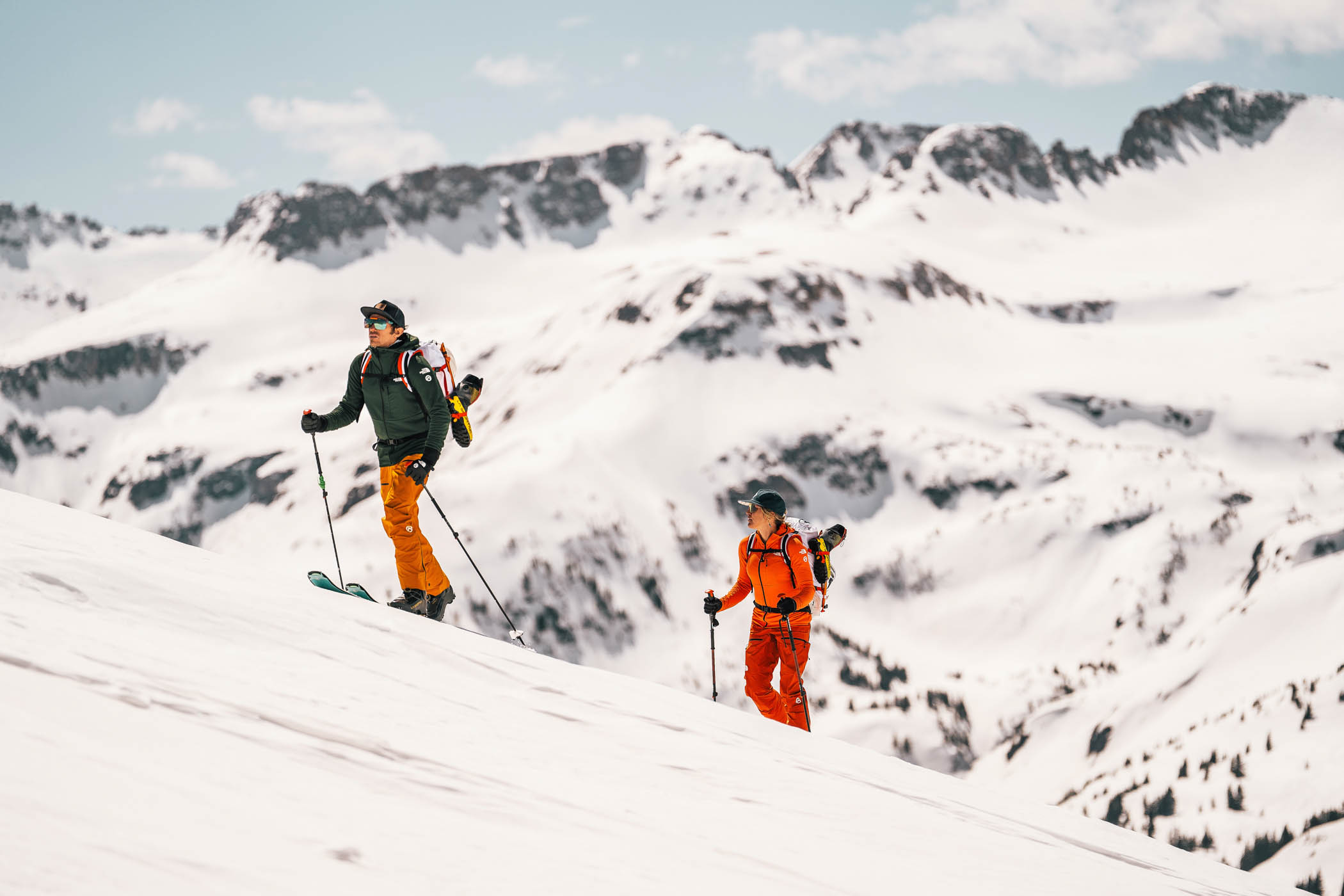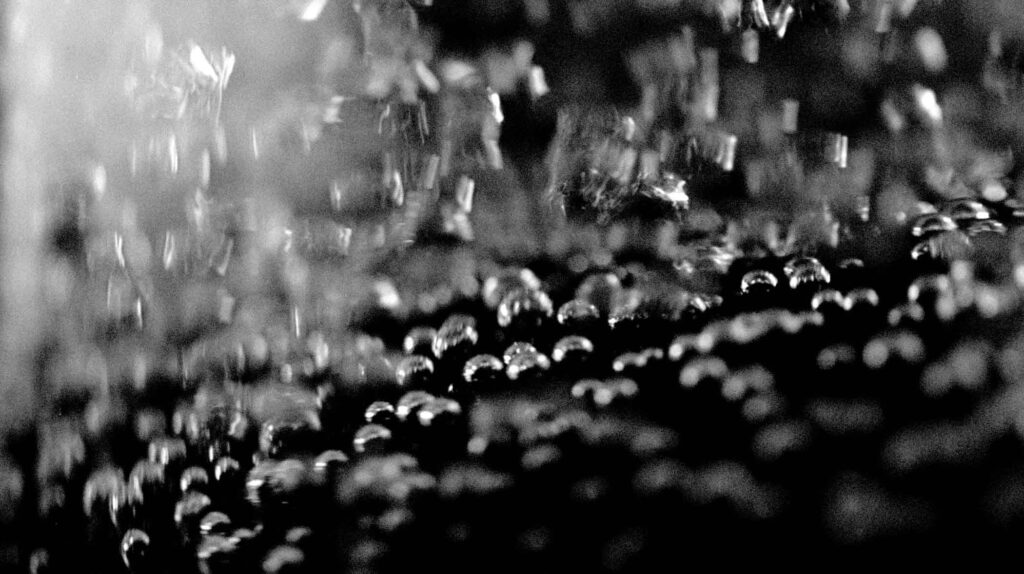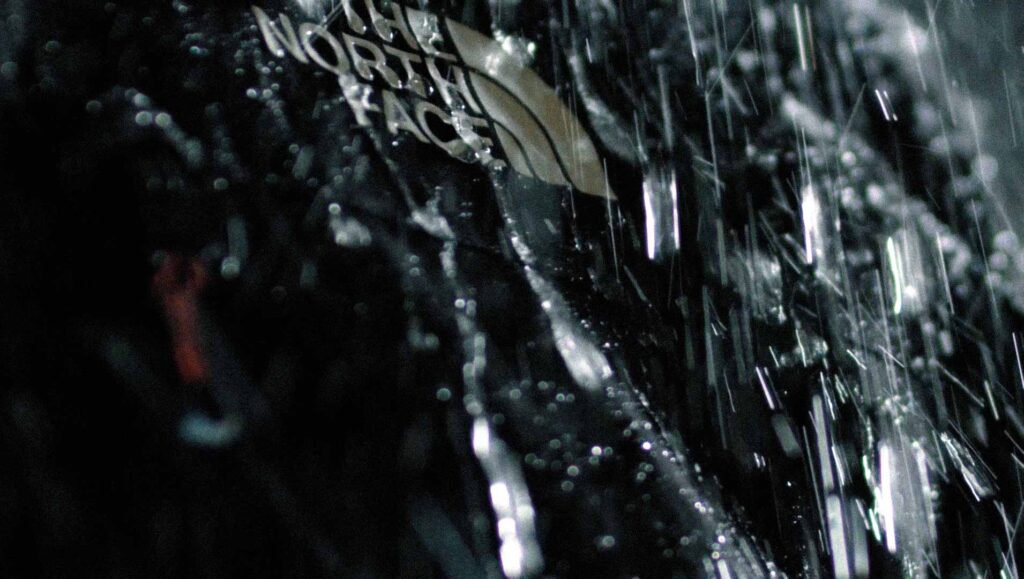Gear Chat | The North Face Futurelight™ & Gore-Tex


So Michael, let’s talk fabrics! Futurelight™ is The North Face’s own waterproof membrane technology, launched in the autumn of 2019. In simple terms, what is it?
Futurelight™ is The North Face’s own propriety approach to challenge the status quo of waterproof-breathable solutions in the marketplace. While virtually every conventional membrane consists of a layer with microporous tears that allow moisture to evaporate through these holes, Futurelight™ is built from nano-sized single fibres that are stacked on top of each other. This creates a more breathable structure than existing extended layer options.
The additional benefits, besides enhanced breathability, are weight saving and a more flexible membrane that gives added comfort to the wearer as well as a protective shield that creates less noise during usage.
You’ve spoken in the past of how Futurelight™ has improved sustainability. PFCs (perfluorinated chemicals) have been widely used to enhance the durable water resistance (DWR)of a garment’s outer fabric. We now know PFCs are not good for the planet, but it’s difficult to find suitable alternatives. How close are you to making Futurelight™ PFC-free?
When it comes to the usage of chemicals in waterproof-breathable fabrics, you have two areas you need to look into. First, the membrane itself, then what you’re using to enhance the DWR of the outer layer.
Futurelight™ consists of a singlepolymer fibre compared to PTFE (polytetrafluoroethylene), so it doesn’t contain any questionable chemical ingredients. With regards the DWR treatment, here the whole industry has made big steps over the last few years, moving from long-chained PFCs to either C6 or C0. While C6 still contains PFCs, they break down faster and are not as persistent in the environment.
For Futurelight™, The North Face offers only C0 DWRs – so treatments that contain zero polyfluoros. Why is the DWR on the outside of your shell important if you have the waterproof membrane, you might ask? Well, if the outer layer is soaked with water, the system will not work anymore. In order for vapour to move from the inside to the outside of your jacket, the face fabric needs to be able to spread the moisture that comes from inside so it can evaporate. This means it is crucial to maintain DWR properties on the jacket to keep it functional.


I’ve used Futurelight™ in footwear and clothing and it’s mightily impressive. For decades I’ve also tested technical clothing that uses Gore-Tex®membranes. How doesGore-Tex® differ?
As explained above, the key difference is the construction of the waterproof barrier in the membrane. Simplified, GTX® is a sheet that is over-stretched and, as a result, has microporous tears in it; while Futurelight™ can be seen as nano-sized threads that lay on top of each other. Both constructions offer different properties to the user.
As the GTX® membrane is pre-stretched, it is sandwiched between two non-stretchable layers (hence the name ‘hardshell’). This makes it durable, ‘bullet proof’ and with an extremely high resistance to withstand water pressure. Futurelight™, due to its more open structure, excels when the ability to transport moisture from the inside out is key.
In real life, let’s compare a trekking tour through the mountains where you need to be sure to stay dry during long periods of rain, while carrying a backpack that creates high pressure points on your back and shoulder straps: GTX® is your favoured option here.
On the other side, you might have a long ski touring day with a lot of vertical ground to cover. It is key that you stay dry on the inside while maintaining a protective barrier against wind, snow and rain during your high-aerobic output and, in that case, you would choose a Futurelight™ shell.
I am a strong believer in looking after your kit, washing it with appropriate products rather than generic laundry detergents, and keeping it in use for as long as possible. What can we do to ensure the long-term performance of our technical outerwear? Is there a difference between how we should care for Futurelight™ versus Gore-Tex® clothing?
You are 100% right. The correct treatment of your garment is not only enhancing its function but also key to maintaining a long life. GTX® and Futurelight™ are high-quality solutions with long-lasting DWR treatments. That means, as a first step, maintaining the properties is just as simple as washing your garment to get rid of oils and stains. Then simply re-activating the DWR through tumble drying it at 60 degrees, or just warming up the outside with a hairdryer for, say, 20 minutes. After multiple washes it will become beneficial to use a DWR activator (The North Face has developed a biodegradable solution with the company DFNS that is available in our stores).
Gore-Tex® has recently been developing expanded polyethylene (ePE) membrane solutions, in a move away from the ePTFE (polytetrafluoroethylene), as the latter resides in the class of environmentally damaging flouropolymers. What are the challenges in integrating the new Gore ePE material into The North Face clothing, and how long do you think it will be until your apparel is completely ePTFE-free?
The integration of the GTX® ePE membrane is pretty straight forward and we are partnering with GTX® for our new developments on that. Besides this, we will introduce DryVent Mono, a mono-material solution for waterproof-breathable performance that will allow us to create a fully circular shell. This means that after the lifecycle of the jacket, it can be fully shredded and transferred into polyester fibres that can then be used to create new garments; a solution that we do not have currently with GTX® or Futurelight™. So, there are various membrane options that offer ePTFE-free solutions, but again, the other key factor when it comes to the functionality will be the DWR. We strive to become ePTFE-free, and free of all PFCs in our apparel, by summer 2025.